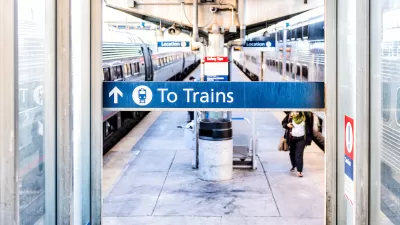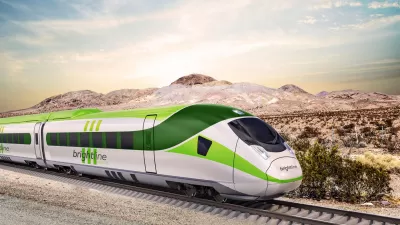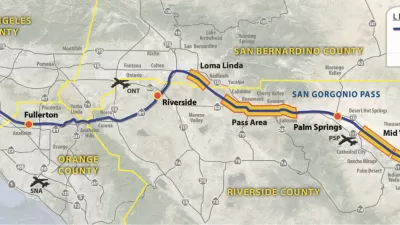If built, regional high-speed rail networks could provide an alternative to uncomfortable air travel and prevent travelers from becoming stranded at airports during extreme weather.

A high-speed rail network could be the solution to the vast disruptions in travel caused by canceled flights and poor weather every year, argues Owen Pickford. A proposal from the Federal Railroad Administration (FRA) shows what a hub-and-spoke Midwest rail network could look like. According to Pickford, "Much of it is not really a high-speed rail network, more like 'higher' speed. Only on 'Core Express' corridors will train speeds exceed 125 mph, while the 'Regional' sections will be in the 90 mph to 125 mph range under the FRA plan." Late last year, Amtrak's St. Louis-to-Chicago trains started reaching top speeds of 90 miles per hour, with an ultimate goal of traveling at 110 miles per hour.
True high-speed rail, Pickford argues, would make trips across the Midwest faster and more climate-friendly while reducing operating costs and bringing economic benefits to cities without adequate air service. Meanwhile, in the Pacific Northwest, the proposed Cascadia Rail system would have provided an alternate transportation option for travelers from Sea-Tac Airport during recent winter storms. Comprehensive rail systems could also put pressure on airlines and reduce their lobbying power, forcing them to provide better service.
FULL STORY: High Speed Rail Is a Solution for Terrible Airlines

Alabama: Trump Terminates Settlements for Black Communities Harmed By Raw Sewage
Trump deemed the landmark civil rights agreement “illegal DEI and environmental justice policy.”

Planetizen Federal Action Tracker
A weekly monitor of how Trump’s orders and actions are impacting planners and planning in America.

The 120 Year Old Tiny Home Villages That Sheltered San Francisco’s Earthquake Refugees
More than a century ago, San Francisco mobilized to house thousands of residents displaced by the 1906 earthquake. Could their strategy offer a model for the present?

LA’s Tree Emergency Goes Beyond Vandalism
After a vandal destroyed dozens of downtown LA trees, Mayor Karen Bass vowed to replace them. Days later, she slashed the city’s tree budget.

Sacramento Leads Nation With Bus-Mounted Bike Lane Enforcement Cameras
The city is the first to use its bus-mounted traffic enforcement system to cite drivers who park or drive in bike lanes.

Seattle Voters Approve Social Housing Referendum
Voters approved a corporate tax to fund the city’s housing authority despite an opposition campaign funded by Amazon and Microsoft.
Urban Design for Planners 1: Software Tools
This six-course series explores essential urban design concepts using open source software and equips planners with the tools they need to participate fully in the urban design process.
Planning for Universal Design
Learn the tools for implementing Universal Design in planning regulations.
Ada County Highway District
Clanton & Associates, Inc.
Jessamine County Fiscal Court
Institute for Housing and Urban Development Studies (IHS)
City of Grandview
Harvard GSD Executive Education
Toledo-Lucas County Plan Commissions
Salt Lake City
NYU Wagner Graduate School of Public Service





























